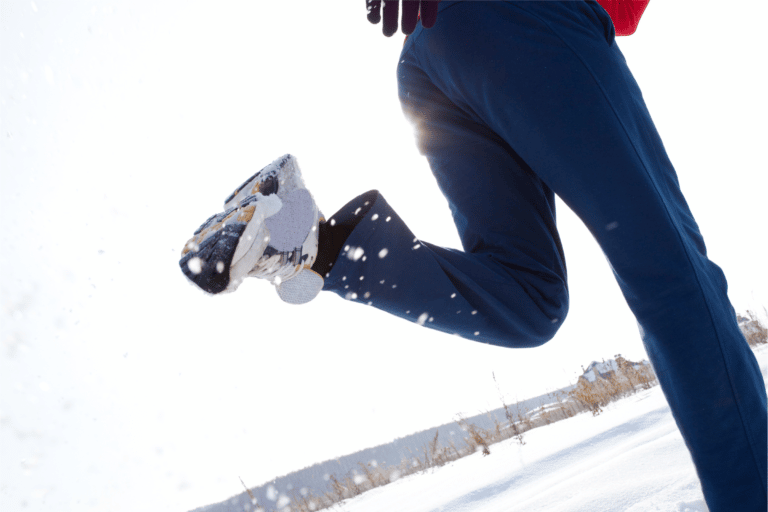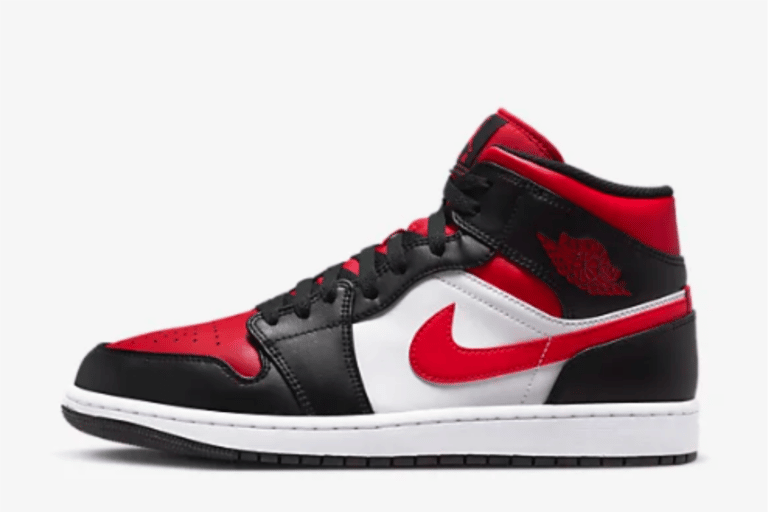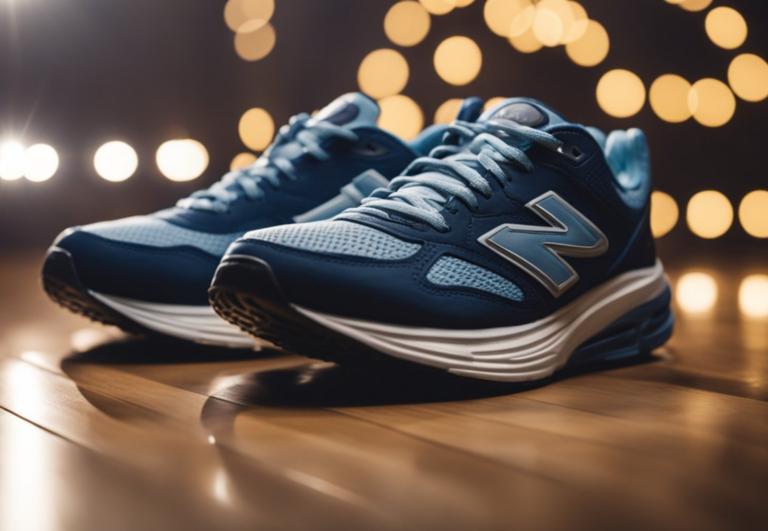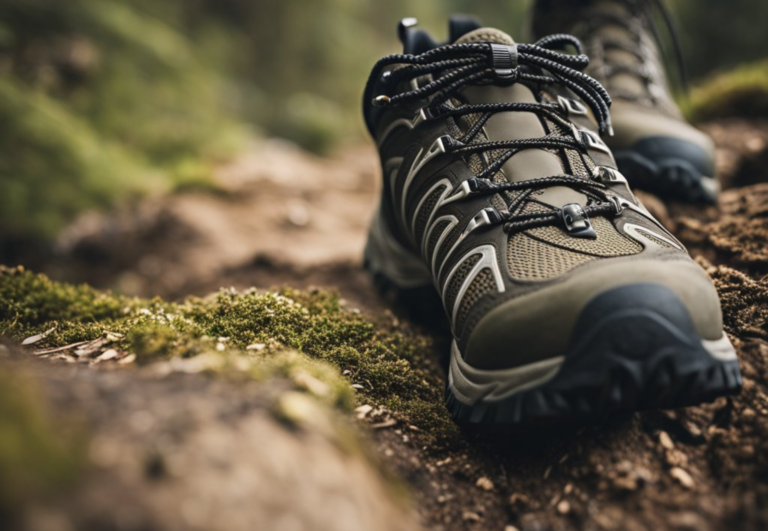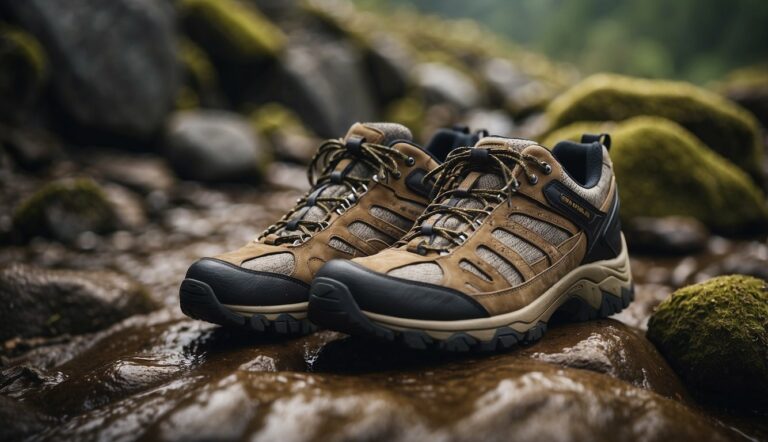13 Common Reasons Running Shoes Rub the Back of the Ankle or Heel (With Fixes!)
If you’re dealing with the annoyance of running shoes that rub the back of your ankle, you’re not alone. Many runners experience this common issue, which can be caused by a variety of factors. Understanding why your running shoes are causing discomfort is the first step to finding a solution.
Whether it’s a poor fit, heel slippage, the natural breaking-in period of new shoes, specific shoe design elements, your foot’s shape, worn-out shoes, using the wrong or old socks, incorrect lacing technique, your unique ankle mobility or gait, excessive wear on one side of the heel, manufacturing defects, heel counter problems, or even temperature-related swelling—each reason contributes to the potential for rubbing at the back of the ankle.
Identifying the root cause can help you make the necessary adjustments to alleviate the issue, ensuring a more comfortable and enjoyable run.
13 Reasons Why Running Shoes Rub the Back of Your Ankle
If you’re a runner, you might know the discomfort of shoes that rub the back of your ankle. This nuisance affects a surprising number of runners, each case with its own cause.
Let’s look at the common reasons so you can pinpoint the issue and find relief.
- Poor fit
- Heel slippage
- Breaking-in period
- Shoe design
- Foot shape
- Worn-out shoes
- Wrong or old socks
- Wrong lacing technique
- Ankle mobility or gait
- Excessive wear on one side of the heel
- Manufacturing defects
- Heel counter issues
- Temperature and swelling
Remember, solving this problem often doesn’t require drastic measures, just small adjustments. Keep these points in mind to ensure a smoother, more comfortable run.
Poor Fit

When your running shoes don’t fit properly, it’s like trying to solve a puzzle with the wrong pieces; it just won’t feel right. Incorrect shoe size – both too large and too small – can lead to unnecessary pain and friction against your ankles.
Shoes that are too tight cause compression and can lead to blister formation, while those that are overly loose allow your foot to move excessively within the shoe, increasing the risk of shoe rubbing.
To keep your ankles and skin healthy, pay attention to how your shoes fit in the heel area. A snug fit, not tight, is ideal to minimize movement which could be exacerbated by moisture or sweat during a run.
If you often experience blister formation, consider using solutions like talcum powder to reduce friction or protective barriers such as KT tape, applied properly to vulnerable areas, to shield your skin.
| Tips for Proper Fit | Description |
|---|---|
| Thick Socks | Wear thick socks when trying on new shoes to ensure a secure, cushioned fit without being too tight. |
| Heel Test | Your heel should fit comfortably with minimal sliding, ensuring the shoe isn’t too loose. |
| Toe Room | Make sure there’s a thumb’s width of space in front of your longest toe to avoid problems like corns, calluses, and pressure on toenails. |
By choosing running shoes that fit well, you’re setting yourself up for more comfortable runs free of the common foot problems that come from poorly fitting footwear.
Heel Slippage
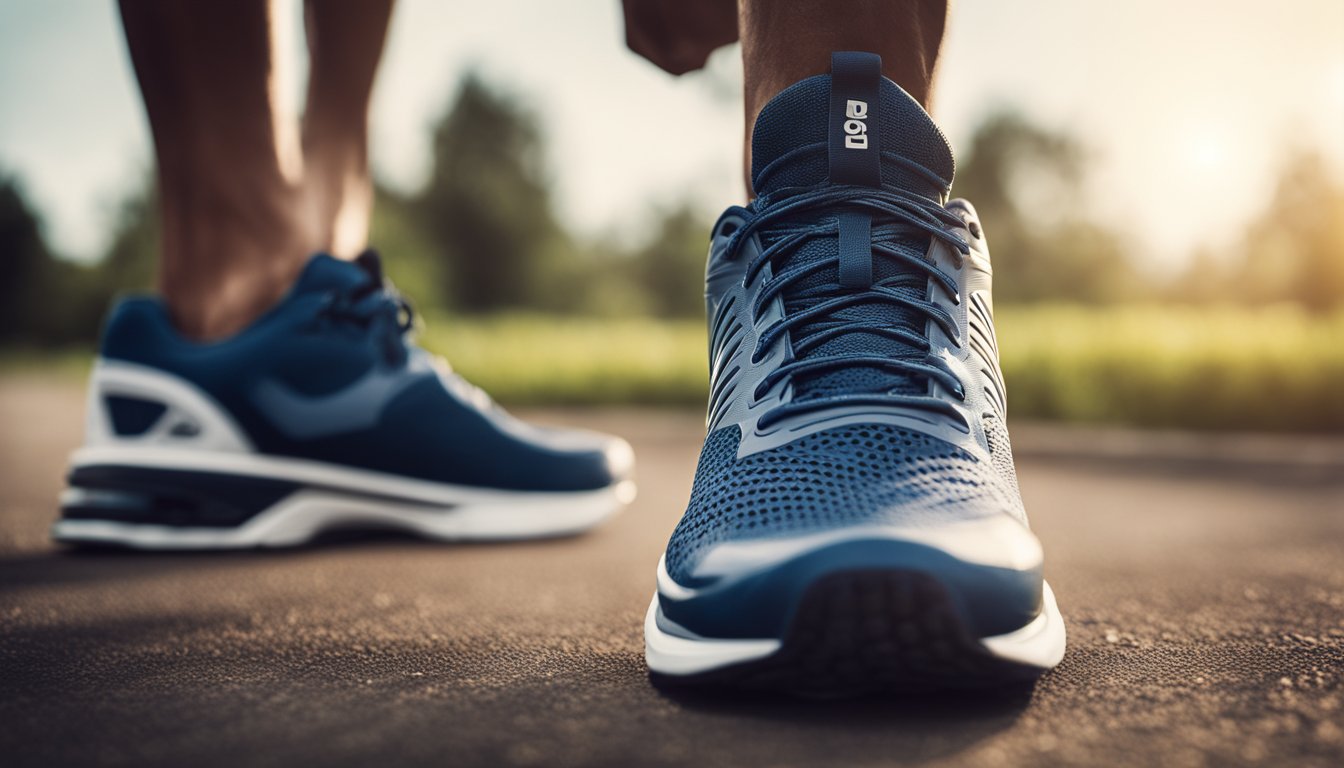
When your heels slide in and out of your shoes while running, this is known as heel slippage. It’s not only uncomfortable but can lead to unwanted friction against the skin on your ankles. This repeated rubbing can cause blisters or even result in rough calluses over time.
What Causes Heel Slippage?
- Improper shoe fit: Shoes too big create a gap allowing your heel to move.
- Smooth sock material: Some fabrics don’t grip well inside the shoe.
- Foot anatomy: Every individual’s heel shape is unique and can affect fit.
Sweat and moisture can worsen slippage by reducing friction inside the shoe. To combat this, you can apply talcum powder to your feet to keep them dry, or you can use Leukotape P on your heels to create a barrier against rubbing. Remember to keep your toenails trimmed as well as long nails can push your foot forward in the shoe, contributing to heel movement.
To manage heel slippage effectively:
| Action | Benefit |
|---|---|
| Tighten laces | Reduces the space around the ankle |
| Use heel grips | Increases friction and holds heel in place |
| Choose proper socks | Absorbs moisture and enhances fit |
Regularly experiencing shoe rubbing can also indicate common foot problems. Pay attention to your feet post-run. If you observe persistent corns or feel pain in the ankles, it’s a good idea to seek advice to avoid chronic issues.
Breaking-in Period
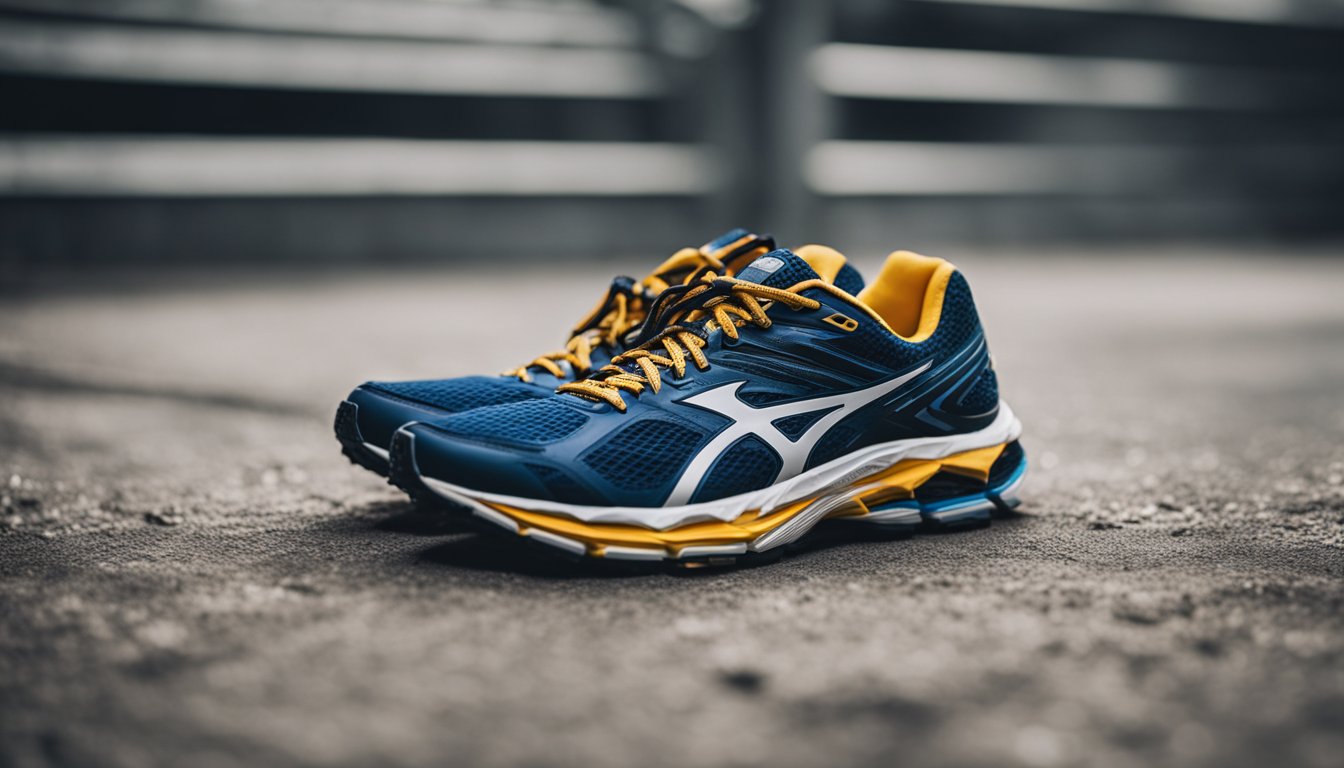
When you first get your running shoes, it’s essential to give them a proper break-in period. This phase allows the shoes to mold to the unique shape of your feet, which reduces the chance of blisters and calluses caused by friction and rubbing.
- Initial Wear: During the first few wears, limit your running sessions. Short walks in your new shoes can help your feet to adjust gradually.
- Prevent Rubbing: To minimize shoe rubbing on your ankles, consider applying a small piece of Leukotape P or a bandage to areas prone to pain. This provides an extra layer of protection against the skin.
- Keeping Dry: Keep your feet as dry as possible, since moisture from sweat can increase friction. Talcum powder or moisture-wicking socks can help absorb sweat and reduce dampness.
- Caring for Your Feet: Trim your toenails regularly to prevent them from pressing against the shoe, which can cause discomfort. If you notice any common foot problems like corns or persistent calluses, address them promptly to avoid further irritation.
Remember, patience during the break-in period can prevent many issues related to discomfort and allow for a more enjoyable running experience.
Shoe Design

When choosing running shoes, the design plays a significant role in preventing discomfort around your ankles.
Collar height is particularly important; shoes with a collar that’s too high may constantly rub against your ankles, whereas a low-profile design might not offer enough support and protection.
What to Look For:
- Padding: Ample padding around the collar reduces friction. Soft materials and padding cradle the ankle, decreasing the risk of blisters.
- Material: Opt for shoes with breathable materials, such as mesh, to manage moisture and sweat, which often lead to skin irritation and common foot problems like corns and calluses.
- Back Counter Rigidity: A sturdy back counter holds your heel in place. This rigidity keeps your heel and ankles stable, minimizing rubbing and movement that can damage skin and toenails.
- Fit: Ensure the heel counter is snug, but not too tight. An ill-fitting heel counter can lead to excessive friction, resulting in pain and blister formation.
Remember, the wrong shoe design can lead to a painful experience with every step. When shopping, look for a harmonious balance in shoe design that caters to both comfort and functionality, keeping your ankles happy mile after mile.
Foot Shape
When looking for running shoes, your foot shape can be the unsuspecting culprit behind discomfort. If your shoes don’t complement the natural contour of your feet, friction and rubbing against the heels can occur. This happens because the back of the shoe may not align well with your ankles, leading to pain and possibly causing blisters or skin irritation.
Common Foot Problems:
- Corns
- Calluses
- Excessively curved toenails
These issues can cause the shoe to fit improperly and rub against your ankle. Managing moisture and sweat can also be challenging, as these often make your skin softer and more susceptible to injury from rubbing shoes.
Preventative Measures:
- Use of talcum powder to reduce moisture
- Application of Leukotape P on areas prone to blisters
Both methods can create a barrier between your shoe and skin, reducing the chances of shoe rubbing against your ankles. Be mindful of your foot shape when purchasing running shoes to ensure a proper fit and to minimize discomfort.
Worn-out Shoes
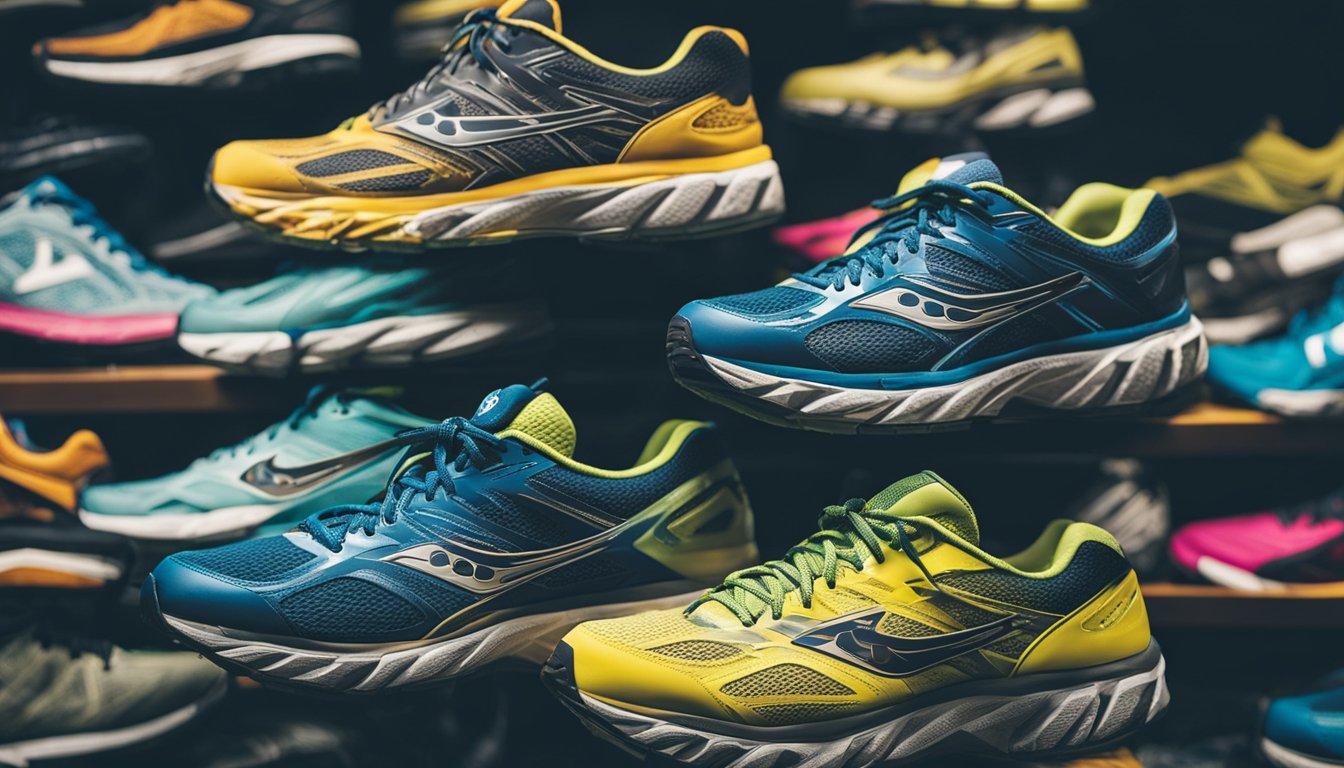
When your running shoes are past their prime, they can become a source of discomfort. Worn-out shoes may lack the supportive structure necessary to keep your feet in the right position, often leading to friction and rubbing at the ankles. Over time, this constant friction can irritate your skin, potentially resulting in blisters or calluses on your ankles.
Sensitive areas around your ankles can suffer as the interior of an old shoe breaks down. The heel counter, which cradles the back of your foot, can become less stable and cause your heels to slip. This slipping is a common cause of shoe rubbing which, coupled with sweat and moisture, increases the risk of painful skin problems.
A brief checklist for maintaining healthy ankles in shoes:
- Inspect: Regularly check for signs of wear and tear. Look for stretched or torn areas that could cause rubbing.
- Replace: Change your running shoes after 300-500 miles of use, or as soon as you notice significant wear.
- Protect: Use moisture-wicking socks to keep your feet dry and reduce the chances of friction.
If you find that your shoes rub against your ankles, consider applying a protective barrier like talcum powder to reduce moisture or using Leukotape P as an interim protective layer. However, these are temporary solutions, and addressing the underlying issue with the shoe is crucial. You could also try insoles or orthotics to provide a little more cushioning in the short term, but it isn’t a permanent fix!
Regularly trim your toenails and manage corns or calluses to prevent additional inside-shoe friction that can aggravate ankle rubbing.
Wrong or Old Socks
When your socks aren’t right, the delicate skin around your ankles suffers.
The wrong socks—those that are too thin or worn out—provide little protection against the friction caused by your running shoes. Friction, in turn, can lead to blisters and pain in the ankles, exactly the kind of setback you don’t want on your run.
Choosing the proper socks is critical because they act as a barrier between your skin and the shoe. Old socks may have thinned out or developed holes, reducing their effectiveness. Furthermore, socks that have lost their elasticity can bunch up inside the shoe, creating uneven pressure points and increasing the risk of corns, calluses, or damaged toenails.
| Sock Type | Benefits |
|---|---|
| Thick, padded socks | Cushion your ankles and reduce rubbing |
| Moisture-wicking material | Keep feet dry, preventing blisters |
| Snug fit | Prevent bunching and uneven pressure |
If sweat is a concern, opt for moisture-wicking materials that draw moisture away from your skin, keeping your feet drier and less prone to blistering. Should you experience shoe rubbing, strategically placed Leukotape P on high-friction areas can act as a temporary solution. Talcum powder may also help by reducing moisture and friction.
Remember, your socks are as essential to your run as the shoes on your feet, so keep them fresh and suitable for your needs.
Wrong Lacing Technique
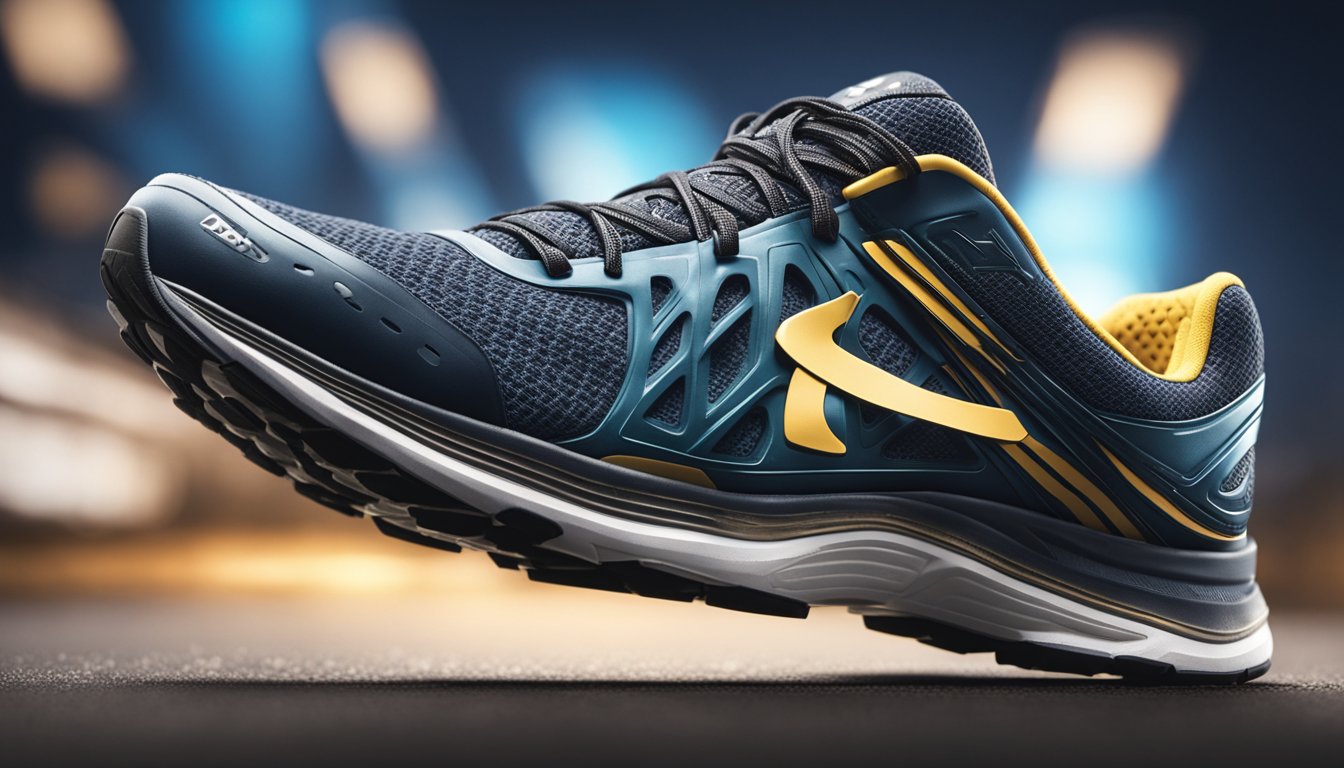
The way you lace your running shoes could be the unsuspecting culprit behind discomfort in your ankles. Incorrect lacing, more often than not, leads to unwelcome friction and pressure that aggravates the skin, sometimes resulting in blisters or calluses.
When laces are tied too tightly, they can create excess pressure on the ankle and surrounding areas. On the flip side, laces that are too loose can cause your foot to move around inside the shoe, increasing skin irritation and moisture build-up from sweat – both of which may lead to painful blisters.
Here are some lacing tips to help prevent shoe rubbing:
| Lacing Technique | Benefit |
|---|---|
| Looser Lacing at Ankle | Reduces pressure on the ankle |
| Heel Lock Lacing | Minimizes heel movement and friction |
| Window Lacing | Alleviates pressure on sensitive areas |
Remember, well-laced shoes support and protect your feet without squeezing them. If you frequently find that your toenails suffer after a run, it might not just be the lacing, but also the fit and shape of the shoe.
Don’t overlook the value of using simple remedies such as talcum powder to keep moisture at bay, and consider using protective coverings like Leukotape P in areas prone to rubbing, but do this delicately to avoid further issues like corns and calluses.
Your running experience should be enjoyable, not painful. With the right lacing technique, you can say goodbye to the irritation and hello to a comfier jog.
Ankle Mobility and Gait
When your running shoes rub against your ankles, one potential culprit might be your ankle mobility. Limited movement in the ankles can lead to an awkward gait, which in turn increases friction where the shoe meets the skin. This can cause blisters and irritation on your ankles.
Improper gait can also force your foot to move sideways inside the shoe with each step, creating excess moisture from sweat. Your skin then becomes more susceptible to friction. Moist conditions mixed with constant rubbing might lead to softening of the skin, making it more likely to tear and form blisters or worse, calluses.
To help prevent shoe rubbing:
- Ensure your toenails are trimmed to avoid added pressure.
- Use talcum powder to keep your feet dry and reduce moisture build-up.
- Apply Leukotape P over areas prone to blisters to reduce friction.
Simple Tips to Improve Ankle Mobility and Gait
| Tip | How It Helps |
|---|---|
| Stretch regularly | Promotes flexibility and range of motion |
| Strengthening exercises | Builds stability to correct your gait |
| Adopt proper shoe fit | Prevents excess movement and skin irritation |
Remember that these small adjustments in your routine can make a big difference in preventing discomfort from running shoes. Keep your stride smooth and your ankles blister-free!
Excessive Wear on One Side of the Heel

When your running shoes show more wear on one side of the heel, it’s often a sign that your foot is rolling too much to the inside or outside as you run or walk. This uneven wear can lead to increased friction against your ankle, possibly resulting in pain or discomfort. Over time, this friction from your shoes rubbing against your skin can cause blisters or calluses on your heels.
Here are some practical tips to help reduce the discomfort:
- Keep Your Feet Dry: Moisture from sweat can soften your skin, making it more susceptible to friction. Always wear moisture-wicking socks and consider using talcum powder to keep your feet dry.
- Protect Your Skin: Apply Leukotape P or special padded plasters to areas where your shoes rub to create a barrier against friction.
- Manage Calluses: Use a pumice stone to gently remove calluses, which can exacerbate shoe rubbing.
- Trim Your Toenails: Long toenails can push your foot forward in your shoe, leading to additional pressure on the heels.
Your running shoes should support your feet without causing undue pressure or pain. If you’re experiencing excessive wear on one side of the heel, it’s important to evaluate your gait and consider shoes designed to correct your specific foot movement, potentially avoiding common foot problems related to your ankles and skin.
Manufacturing Defects

When your running shoes rub the back of your ankle, it might be more than just a bad fit—it could be a manufacturing defect. Sometimes, during the shoe-making process, a mistake can lead to discomfort and even injury.
- Improper Stitching: If the seams inside your shoes are not smooth, they can cause friction against your skin, leading to painful blisters or irritation on your ankles.
- Residue Leftovers: Chemicals such as glue used during manufacturing might not be properly cleaned up. When mixed with sweat and moisture, this can create a harsh environment for your skin.
To mitigate these issues, here’s a quick reference table:
| Problem | Potential Consequence | Quick Fix |
|---|---|---|
| Rough Seams | Skin irritation and blisters | Use of Leukotape P over the area |
| Glue Residue | Increased friction and discomfort | Application of talcum powder |
Note: While temporary fixes like Leukotape P can provide immediate relief, for persistent discomfort due to manufacturing defects, consider consulting a professional cobbler or shoe specialist.
In the case of any persistent corns, calluses, or damage to toenails caused by the shoe defects, seeking advice from a healthcare provider is recommended to prevent common foot problems. Keep an eye on the comfort of your ankles, and don’t let a poorly made shoe slow you down.
Heel Counter Issues

When your running shoes rub the back of your ankle, the heel counter, which is the back part of the shoe providing support, might not be fitting you properly.
A heel counter that’s too stiff or doesn’t conform well to the shape of your heel can cause friction. This friction can lead to blisters, calluses, or corns on your ankles or around the Achilles tendon.
Preventive Measures for Heel Counter Problems
| Issue | Solution |
|---|---|
| Friction | Cushion the heel counter with soft materials such as moleskin or special pads. |
| Blisters | Keep your feet dry. Use talcum powder to reduce moisture and sweat. |
| Shoe Rubbing | Opt for shoes with a softer, more pliable heel counter or break them in slowly. |
If you notice your skin is irritated by the heel counter, you might want to try some home solutions. For instance, applying a piece of Leukotape P over the affected area on your skin can provide a smooth surface that minimizes rubbing. Additionally, keeping your toenails trimmed can prevent added pressure and friction that can exacerbate the problem.
Temperature and Swelling

When you run, your body temperature rises, which can affect your feet. The increase in temperature often causes feet to swell, potentially leading to friction between your ankles and the backs of your shoes.
This is because as your feet expand, the space in your shoe decreases, creating a tighter environment that can rub against your skin.
Prevention Measures:
| Issue | Solution |
|---|---|
| Swollen feet | Choose breathable materials |
| Moisture | Apply talcum powder to reduce sweat |
| Foot expansion | Ensure proper shoe fit even when feet swell |
Moisture from sweat can further exacerbate the issue, not only contributing to swelling but also softening your skin, making it more susceptible to blisters. To combat this, consider using moisture-wicking socks or applying foot powder before lacing up.
Be mindful of other common foot problems like corns, calluses, and ingrown toenails, which can worsen discomfort from shoe rubbing. Regular foot care and maintenance can keep these issues at bay.
If you do notice rubbing, a piece of Leukotape P or a bandage can provide a barrier between your skin and the shoe, but make sure to address the root cause to prevent pain and skin damage.

